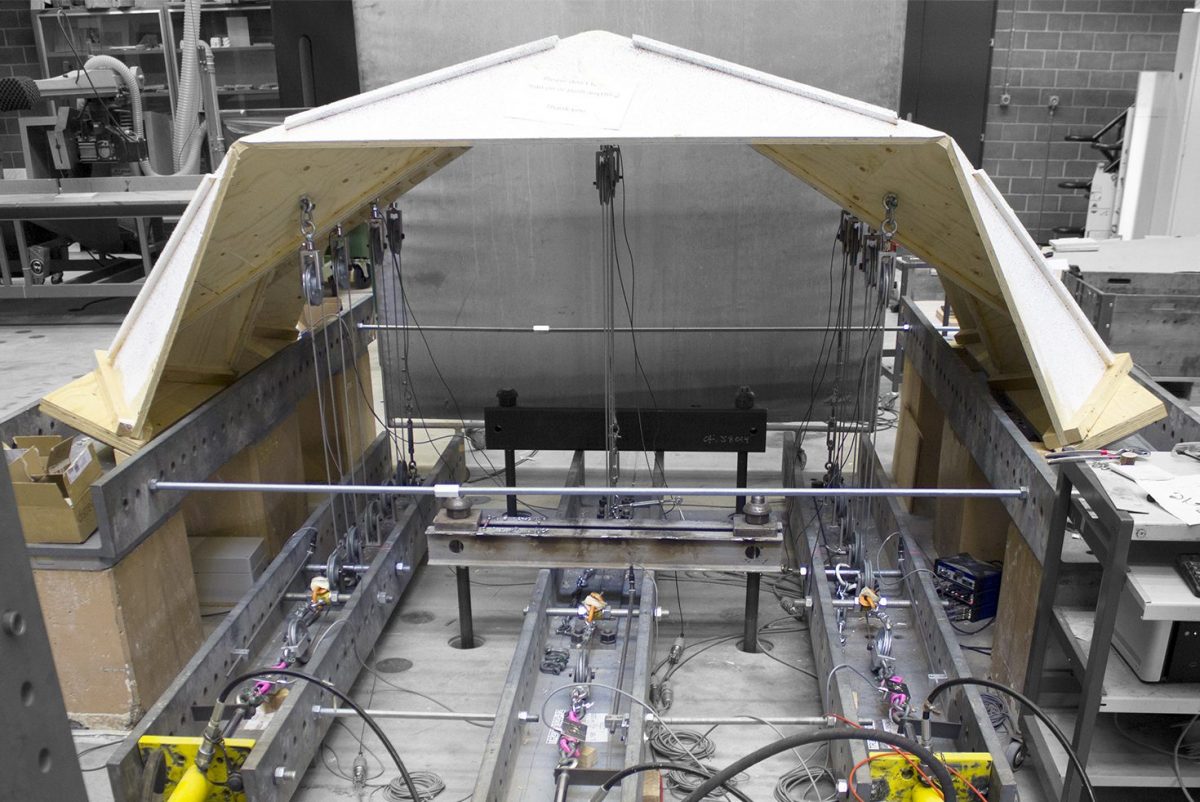RESEARCH DATA
|
Status: Completed, 2014-2017 Doctor: Andrea Stitic, engineer Thesis director: Prof. Yves Weinand, architect and engineer, IBOIS |
RESEARCH ABSTRACT

In structural engineering,folded surface structures present one of the concepts for construction of self supporting column free systems. They utilize structural benefits of folding to achieve material saving and improve structural efficiency. The folding principle can be simply described as stiffening a thin surface by placing its material further away from the axis of flexure.
The application of folded surface structures in timber engineering is motivated by multiple advantages of relatively recently developed, high-performance engineered wood panel products. When used in folded systems, such panels can provide for a sustainable and lightweight solution with high load-bearing potential and high prefabrication possibilities. However, same as all timber products, these panels have limitations concerning the dimensions of the prefabricated units. These limitations are dictated by demands of transportation, assembly and, more stringently, by available manufacturing techniques. These factors influence the selection of timber structures’ potential folded form, by constraining the dimensions of their discrete elements. Accordingly, structural forms with multiple elements along the span are needed for facilitating large spanning timber folded surface systems. Consisting of a large number of discrete plane elements, their realization requires proper edgewise connection details for ensuring an efficient load bearing system. For structures made of thin timber panels, this presents a great challenge when using the conventional joining techniques. For this reason, the use of timber folded structures for civil engineering applications has been very limited. However, recently, the re-discovery of integral mechanical attachments resulted in a new technical solution for edgewise joining of thin timber panels, which utilize digital prefabrication to integrate connectors through plate geometry.
This thesis aims to facilitate the realization of large span timber folded surface structures which use one-degree-of-freedom multiple tab-and-slot joint integral mechanical attachment technique. Regarding the material, the presented work concentrates on certified Kerto-Q laminated veneer lumber panels.
Taking into consideration the constraints of material, fabrication and chosen connection detail, various folded form topologies were examined for the considered application. Moreover, a relation was established between the structural form and the mentioned constraints, allowing for their implementation into the folded form design from the very start.
The structural behaviour of folded systems was studied by performing extensive experimental tests. The innovative test setup developed for this purpose is presented. The results of this in-depth experimental analysis provide new insights regarding the substantial influence of the semi-rigid connection details on the global behaviour of timber folded surface structures. In addition, for analysing their feasibility, the tested structures are reviewed in terms of fabrication time, assembly and on-site construction. Furthermore, based on the experimental test results, a pertinent numerical model for predicting the load bearing behaviour of the regarded structures is provided. Using finite element method the semi-rigid structural behaviour of multiple tab-and-slot joints, as well as the entire timber folded system, was modelled with sufficient accuracy.
Using the developed numerical models, a correlation is established between the folded surface form foldability potential and structural capacity of a static folded system. With respect to the presented findings, it is recommended that when designing timber folded surface structures, foldability of the form should be considered in addition to the previously established geometric constraints arising from material, fabrication and connection details requirements.
In conclusion, a great structural potential of the proposed timber folded plate systems is recognised, and the subjects discussed within this thesis are shown to be of significant influence in establishing these structures on a building scale. The presented investigations provide a solid foundation for future works in the field of timber folded surface structures.